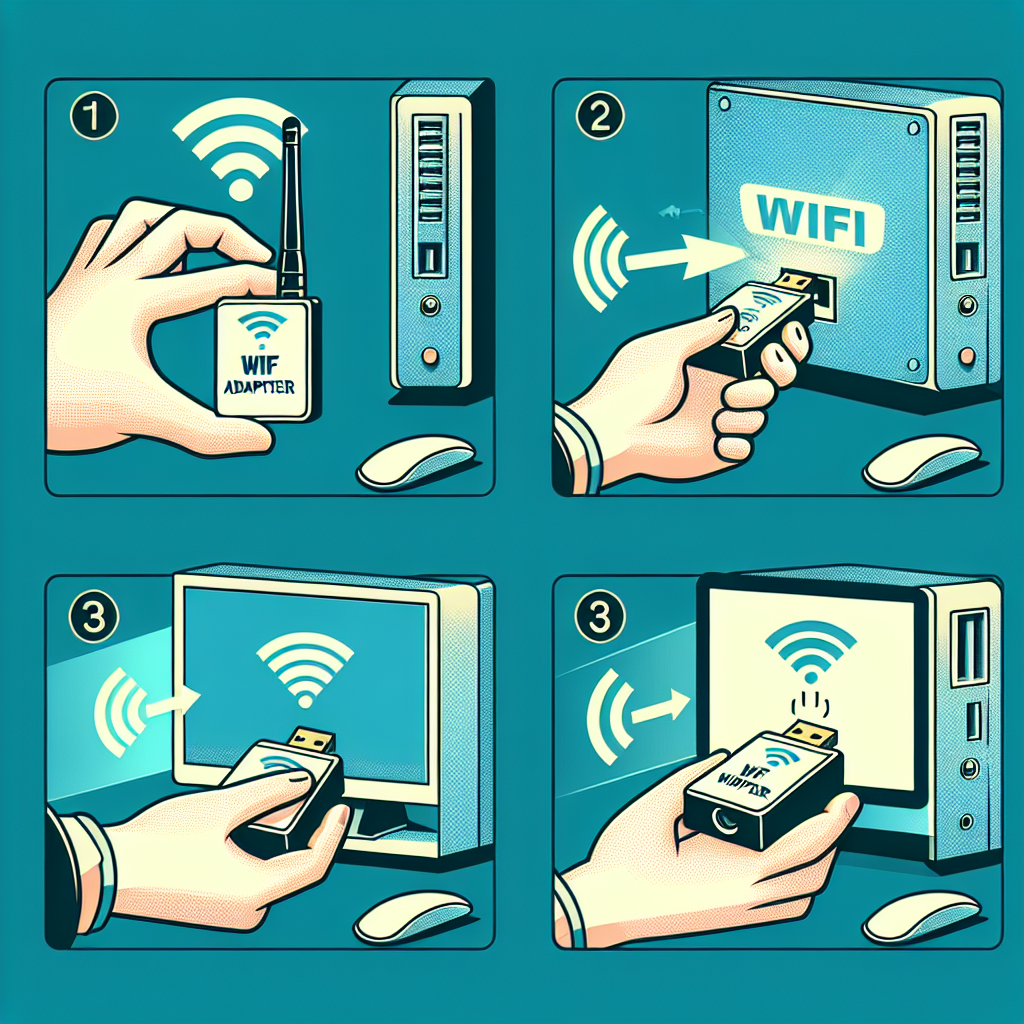Introduction
In today's digital age, having a stable internet connection is essential. Desktops are traditionally wired for internet connectivity, but many modern users prefer the flexibility of WiFi. If you want to connect your desktop PC to a WiFi network, a WiFi adapter is your solution.
Types of WiFi Adapters
WiFi adapters come in two main types:
- USB WiFi Adapters: These are plug-and-play devices that connect to your computer via a USB port.
- PCIe WiFi Adapters: These internal adapters connect to your computer's PCIe slot. They often provide faster and more stable connections compared to USB WiFi adapters.
Comparison: USB vs PCIe WiFi Adapters
| Feature | USB WiFi Adapter | PCIe WiFi Adapter |
|---|---|---|
| Installation | Easy – Plug and Play | Moderate – Requires opening the PC case |
| Connection Speed | Moderate | High |
| Port Requirement | USB | PCIe slot |
| Flexibility | High – Can be used on multiple devices | Low – Fixed to one PC |
Step-by-step Guide to Installing a USB WiFi Adapter
Step 1: Choose the Right USB WiFi Adapter
Before purchasing a USB WiFi adapter, ensure compatibility with your desktop's operating system. Check for features like dual-band support, which allows your device to connect to both 2.4 GHz and 5 GHz networks.
Step 2: Connect the USB WiFi Adapter
Plug the USB WiFi adapter into any available USB port on your desktop. If your computer does not automatically recognize the device, you may need to install the driver software that comes with the adapter.
Step 3: Install the Driver Software
Most USB WiFi adapters come with a driver CD. Insert the CD into your computer's optical drive and follow the installation instructions. If your computer does not have an optical drive, visit the manufacturer's website to download the latest drivers.
Step 4: Connect to a WiFi Network
After installing the driver software, you should be able to connect to a WiFi network. Click on the WiFi icon in the system tray, select your network, enter the password, and click "Connect".
Step-by-step Guide to Installing a PCIe WiFi Adapter
Step 1: Choose the Right PCIe WiFi Adapter
Ensure that the PCIe WiFi adapter is compatible with your desktop's motherboard. Additionally, check if the adapter supports the WiFi standards required for your network, such as 802.11ac or 802.11ax.
Step 2: Open Your Desktop Case
Shut down your desktop and unplug all cables. Use a screwdriver to remove the side panel of the case.
Step 3: Insert the PCIe WiFi Adapter
Locate an available PCIe slot on the motherboard and gently insert the PCIe WiFi adapter. Secure it with a screw to ensure it's firmly in place.
Step 4: Reassemble and Boot Your Desktop
Replace the side panel of the case and secure it with screws. Reconnect all cables and power on your desktop.
Step 5: Install the Driver Software
Like USB WiFi adapters, PCIe adapters also require driver installation. Use the CD that came with the adapter or download the driver from the manufacturer's website.
Step 6: Connect to a WiFi Network
Once the drivers are installed, click the WiFi icon in the system tray, select your network, enter the password, and click "Connect".
Tips for Optimal WiFi Performance
- Placement: Place your WiFi adapter close to your router to ensure a strong signal.
- Antennas: If your WiFi adapter includes external antennas, adjust them for best signal reception.
- Interference: Keep your WiFi adapter away from other electronic devices that may cause interference.
Troubleshooting Common Issues
Problem: No WiFi Networks Found
- Ensure that the WiFi adapter is properly installed.
- Check if the adapter is enabled in the Device Manager.
- Restart your router and desktop.
Problem: Slow Internet Speeds
- Move the WiFi adapter closer to the router.
- Reduce interference from other electronic devices.
- Check for software updates for your WiFi adapter and router.
Problem: Connection Drops Frequently
- Ensure that your router firmware is up to date.
- Check if other devices are causing signal interference.
- Reinstall the WiFi adapter drivers.
Conclusion
Connecting a WiFi adapter to your desktop PC is a straightforward process, whether you choose a USB or PCIe adapter. By following the steps outlined above, you can enjoy the flexibility and convenience of wireless internet on your desktop computer.

